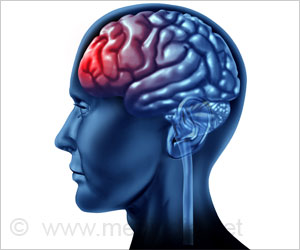
‘Robotic 'Third Thumb' use can alter brain representation of the hand. Although evolution hasn't prepared us to use an extra body part, this robotic technology highlights the extent of our abilities in new and unexpected ways where the brain would adapt the representation of the biological body.’
Tweet it Now
"Body augmentation is a growing field aimed at extending our physical abilities, yet we lack a clear understanding of how our brains can adapt to it. By studying people using Dani's cleverly-designed Third Thumb, we sought to answer key questions around whether the human brain can support an extra body part, and how the technology might impact our brain," says Professor Makin (UCL Institute of Cognitive Neuroscience), lead author of the study. The team enrolled 20 participants who were trained to use the Thumb over five days, during which they were also encouraged to take the Thumb home each day after training to use it in daily life scenarios. The participants were compared to an additional group of 10 control participants who wore a static version of the Thumb while completing the same training.
The Third Robotic Thumb
The Third Thumb is easily customized & 3D-printed and is worn on the side of the hand opposite the user's actual thumb, near the little (pinky) finger. The wearer controls it with pressure sensors attached to their feet, on the underside of the big toes. Wirelessly connected to the Thumb, both toe sensors control different movements of the Thumb by immediately responding to subtle changes of pressure from the wearer.
It was seen that people quickly learned to control an augmentation device and use it for their benefit, without overthinking. The participants' brains were scanned using fMRI before and after the training, while the participants were moving their fingers individually (they were not wearing the Thumb while in the scanner).
Advertisement
It was found that subtle but significant changes existed to how the hand that had been augmented with the Third Thumb (but not the other hand) and the way it was represented in the brain's sensorimotor cortex.
Advertisement
Some of the participants were scanned again after a week that revealed that changes in their brain's hand area had subsided. This suggests that the changes might not be long-term, although more research is needed to confirm this.
"Our study is the first one investigating the use of an augmentation device outside of a lab. It is the first augmentation study carried over multiple days of prolonged training, and the first to have an untrained comparison group. The success of our study shows the value of neuroscientists working closely together with designers and engineers, to ensure that augmentation devices make the most of our brains' ability to learn and adapt, while also ensuring that augmentation devices can be used safely," Paulina Kieliba.
The body augmentation might help society in numerous ways and revolutionize the concept of prosthetics. Although evolution hasn't prepared us to use an extra body part, the study highlights the extent of our abilities in new and unexpected ways where the brain would adapt the representation of the biological body.
Source-Medindia












